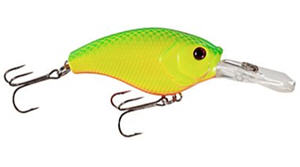
Cold fronts generally aren’t the greatest news for any fishing, other than the fact that pre-frontal conditions usually bring a feeding spree as barometric pressure drops. Following this, though, when cold air and high, clear skies persist, muskie and pike are usually laying pretty low, just trying to stay comfortable, digest, likely pass a little gas … and generally not get too fired up.
A tremendous standby for cold front conditions, or any low-activity period, are jigs. They work for all species, and certainly those big, toothy critters, included.
When they are “off” and skulking hitting them right on the nose -- making it so easy they just can’t pass it up -- is the only hope to trigger a positive response. If it’s above and/or “away,” it’s quite likely to be ignored; for structure, presentations that come very close to or purposefully contact structure are generally most effective.
 Jigs and jig-type lures are very effective for this. To be honest, you might nott enjoy using slow presentations; in fact, but during cold fronts, Esox species seem to like ‘em a whole lot.
Jigs and jig-type lures are very effective for this. To be honest, you might nott enjoy using slow presentations; in fact, but during cold fronts, Esox species seem to like ‘em a whole lot.
Jig and scented soft-plastics like Gulp, often small stuff, as well as live and dead baits on jigs (weight chosen to match depth to be fished) are effective; super-enticing soft plastics like Sebile’s Magic Swimmer work well; jig/jerk soft plastic body baits like Red October’s tubes, jigged and worked vertically are great. Work these presentations up and down edges and parallel to structure. Be ready for strikes on pauses. Often, just a “hop” in the line means a strike. For very sharp and irregular breaklines, generally straight vertical jigging is most effective, especially for this – add to the prior list, Bass Pro Shops XPS Flat Shad crankbait.
Note: If you have questions or comments on this or other articles of mine you may have read, contact me through the website The Next Bite.
- 5708 views

